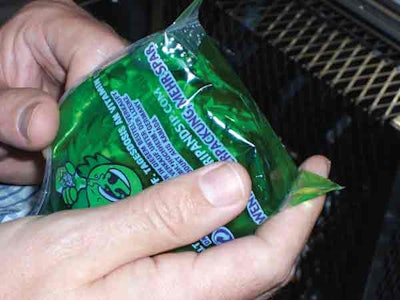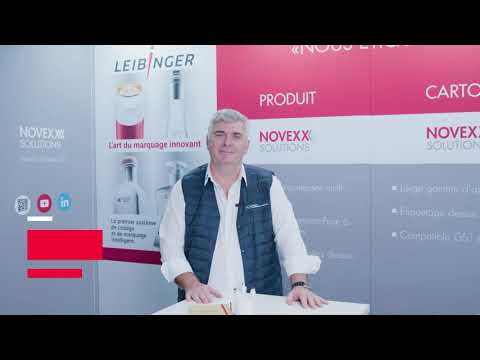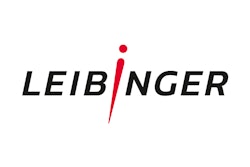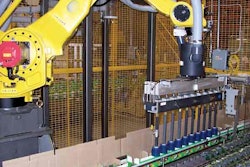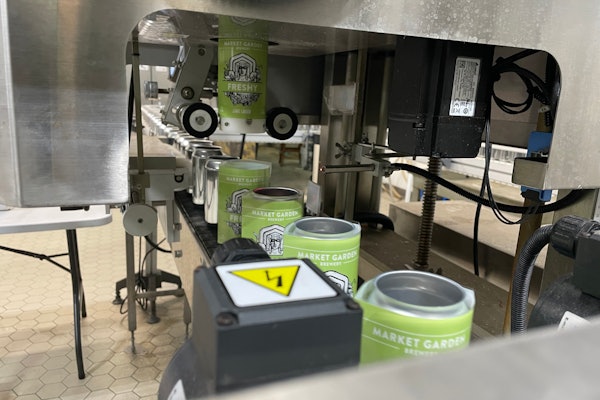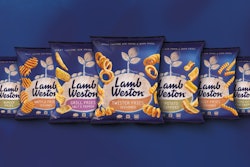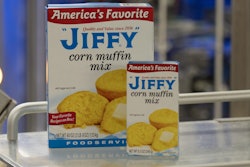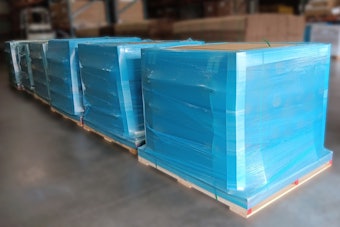Siptop Packaging Inc. gets its name from its patented Siptop pouch. No straw is needed. The user simply tears off the top—notches on either side of the spout make it easy—and sips directly from the pouch.
Convenience and fun were primary drivers behind the concept. So was source reduction, as the pouch weighs considerably less than glass or rigid plastic alternatives.
The pouches are formed and filled from a roll that holds about 18,000 impressions. Supplied by Packall Packaging (www.packall.com), the pouch material is typically polyester/nylon/polyethylene heat-seal layer for Siptop’s own-brand Rip ’n Sip juice drinks or Northern Pure purified water. The outside polyester is reverse-printed flexographically in four or five colors. Soon to be introduced is an Iced Vodka, which incorporates a center layer of metallized nylon for extra graphic pop. Total film thickness in each case is about 4 mils.
Each twin-head filling system on which Siptop pouches are produced was designed in-house and cranks out 120 pouches/min. “No other vertical form/fill/seal machine out there makes a seal that is curved,” says Joyce. “They all seal and cut along a straight line, which is considerably easier. But these pouches are filled two at a time in a horizontal orientation, so the shape of the sealing jaws has to reflect the curved sides of the pouches. The liquid is released at a constant rate and the film is timed so that we get the proper volume in each pair of pouches with each cycle.”
Joyce is reluctant to reveal further specifics about the unusual filling system, nor did he encourage close-up photos of the sealing jaws. But one recent change, he says, has helped a lot.
“We had been sealing the film by pressing a metal ribbon to a silicone backing and using an electrical impulse for a split second just as the jaws closed,” says Joyce. “But the silicone would degrade over time. So we went to a metal-on-metal sealing principle. It’s helped considerably.”
Date and production coding on individual pouches was something of a challenge, says Joyce. “With most form/fill/seal systems, it’s done prior to forming or filling. But the unusual manner in which we make this pouch would have required four print heads per dual-head filler. So we do our ink-jet printing a short distance downstream from the fillers.”
Supplied by Leibinger (www.leibingerusa.com), the ink-jet systems are very compact, says Joyce. “And the ink stream doesn’t clog if you aren’t running them for awhile,” he adds. “That’s a big improvement over some we’ve used in the past.” Two Leibinger print heads per twin-head filler are deployed.
Just downstream from each twin-tube filler is a corner-tuck system that, like the fillers, was also designed in-house. This system is what transforms the pouch into a stand-up package.
“When the pouch comes out of the filler, it doesn’t have a stand-up feature,” says Joyce. “So we developed our own corner-tuck machinery. First it uses a series of puck-like holders to move the pouch from a lay-flat to a vertical orientation. Then it squeezes the liquid product out of the bottom corners of the pouch, creates a seal, and then folds the material under. Heat and pressure applied by mechanical tooling produce the seal and fold-over needed. And it happens at a pouch per second per lane.”
Exiting the corner-tuck machine, pouches encounter another bit of custom engineering that is essentially a chute just long enough and angled perfectly to gently return the pouch to the horizontal orientation needed for downstream robotic case packing.
